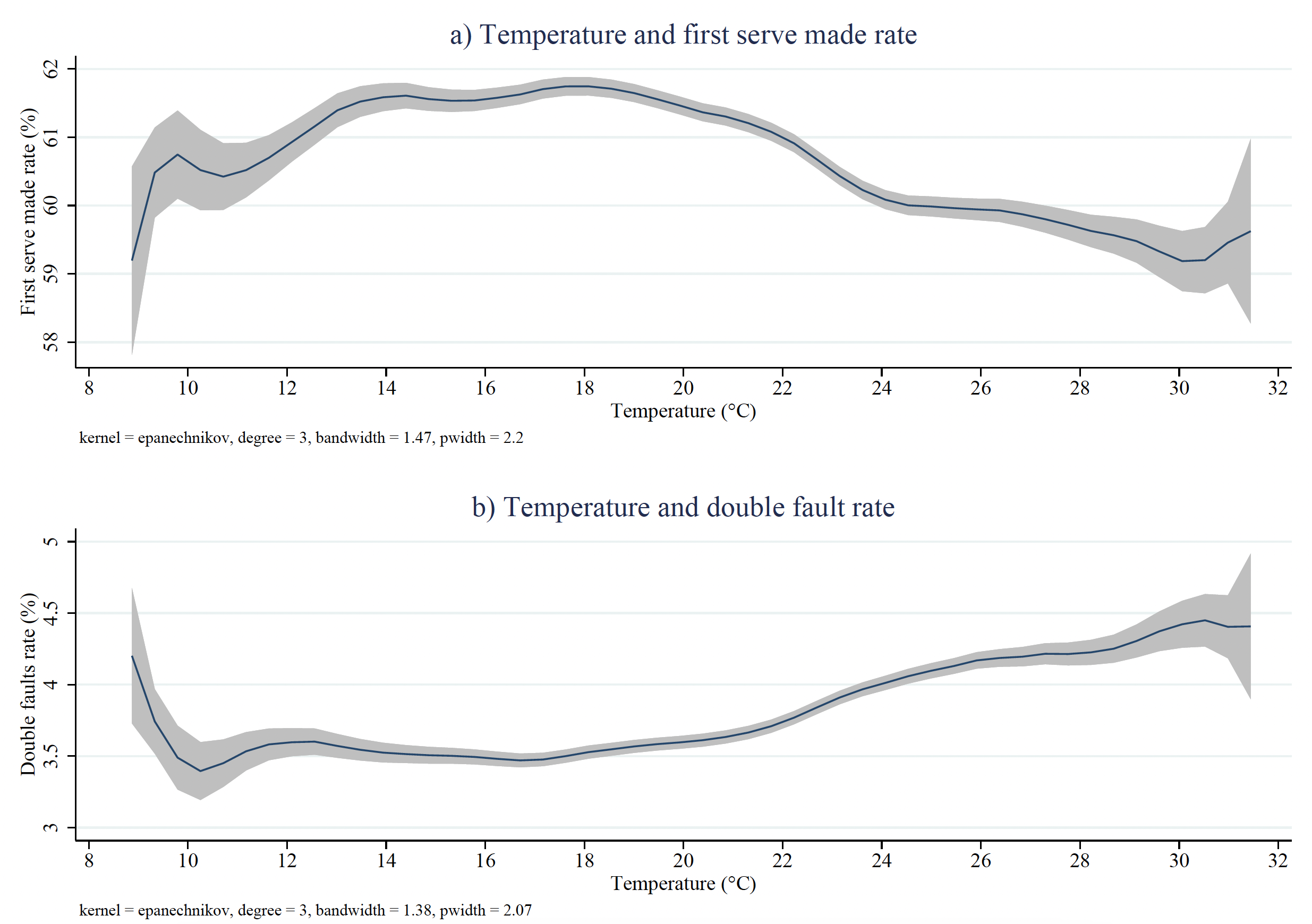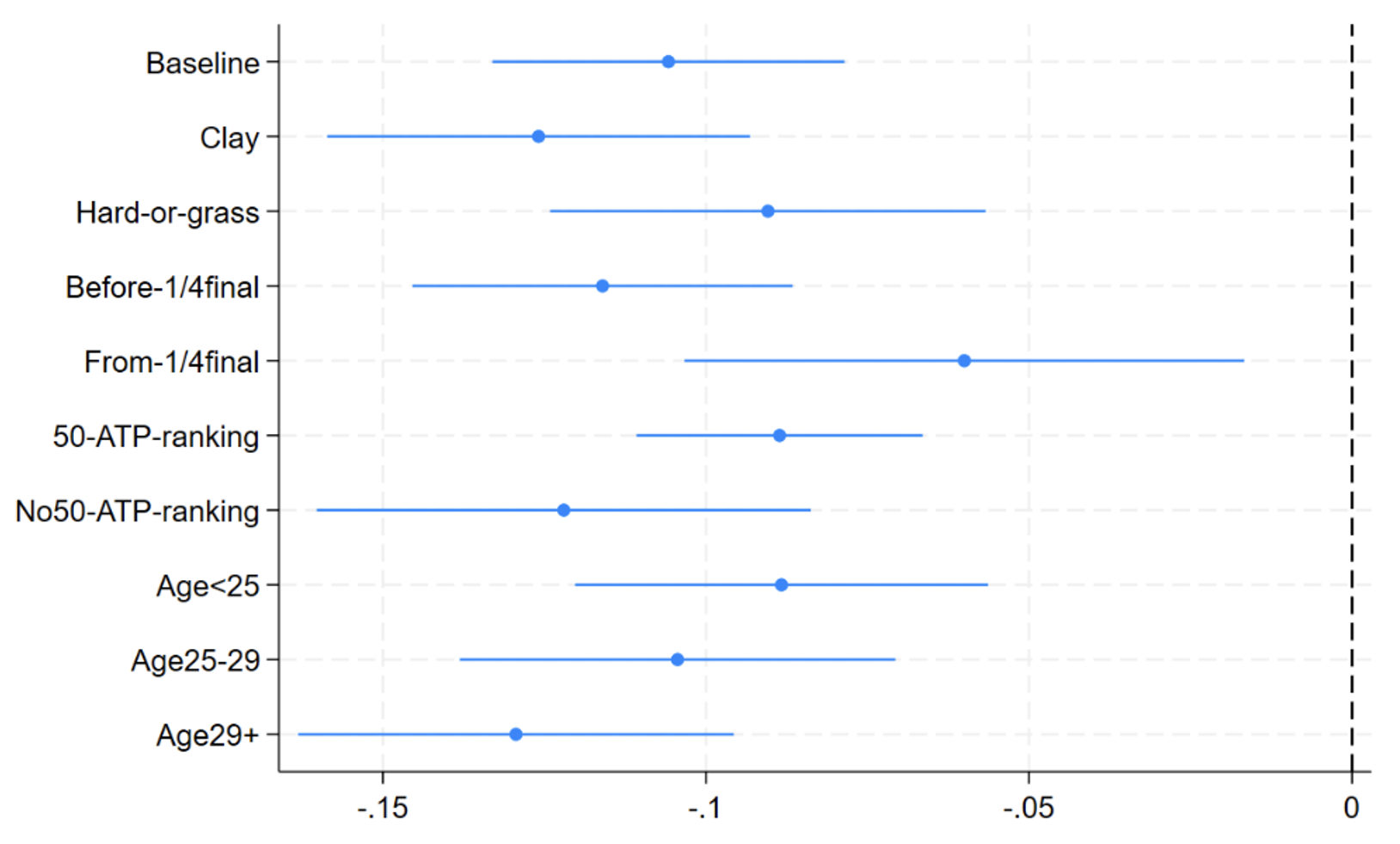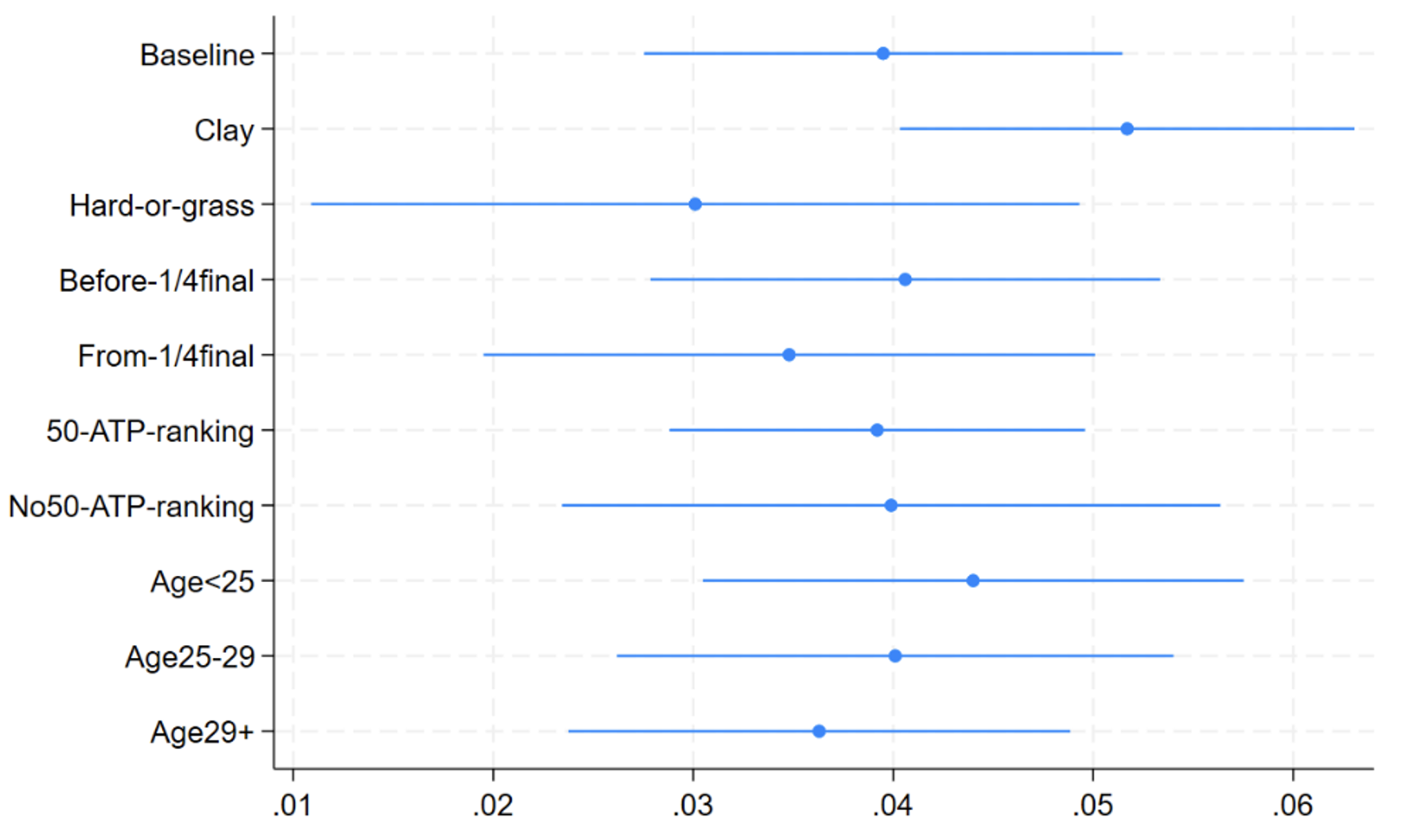According to the World Health Organization (WHO), human beings have an indoors thermal comfort range of 18-24°C (64-75°F). Indoors, climate control can be arranged through heating or air conditioning. Outdoors, people can protect themselves against low temperatures through their clothes. People find it more difficult to protect themselves against high temperatures other than through reducing their level of activity. Temperature may affect productivity at the workplace. Heating or cooling to adjust indoor environment to outside temperatures is important to maintain a level of productivity. However, not all jobs can benefit from climate control. Some workers are inevitably confronted with high temperatures and other unpleasant weather conditions.
Economics of temperature
For a long time, weather conditions did not play an important role in economic research. It is hard to relate regional differences in economic outcomes to differences in climate since there are also different regional non-economic circumstances that matter. By using time series information within geographical areas, economic research has made an important step forward, if only because with climatic variables reverse causality is unlikely to be a major concern. Dell et al. (2014) provide a detailed overview of the ‘new weather economy’ literature. The impact of temperature on productivity has been investigated in a laboratory setting with subjects being randomly assigned to situations with varying temperatures performing cognitive and physical tasks. Particularly with higher temperature, there is a significant loss in productivity related to cognitive tasks.
In recent studies, the effects of high temperatures on individual behaviour have been studied along various dimensions. Mullins and White (2019) find that hot temperatures have a negative effect on mental health and suggest that sleep disruption is the primary mechanism for this. Baylis (2020) uses Twitter data and finds strong negative effects on various mood indicators if temperatures are above 30°C. Heyes and Saberian (2019) study decisions by immigration judges. Although the trials are indoors in good quality, climate-controlled environments, the findings suggest that higher outdoor temperatures reduce decisions favourable to people applying for asylum. This could be caused by high outdoor temperatures affecting indoor temper, irritability, and other emotions. Park et al. (2020) find that high temperatures have a negative effect on exam test scores of students, with air conditioning at school largely offsetting these effects.
The evidence that hot temperatures negatively impact health, cognition, and task performing raises the question of whether extreme temperatures may increase the risk of work-related injuries. Dillender (2021) and Park et al. (2021) for the US and Filomena and Picchio (2022) for Italy find that workplace injury rates significantly increase with temperature. Somanathan et al. (2021) study how heat affects production in Indian manufacturing, finding that in the absence of climate control worker productivity declines on hot days and, even in the presence of climate control, absenteeism increases on hot days. LoPalo (2023) examines the impact of weather conditions on productivity of interviewers of household survey data, finding that on the hottest and most humid days interviewers complete fewer interviews per hour.
The effects of high temperatures on performance in professional tennis have also been investigated in recent studies. Smith et al. (2018), for example, conclude that in women’s matches at the Australian Open, high temperatures do not affect first serves but do increase double faults. Burke et al. (2023) analyse data from Association of Tennis Professionals (ATP) and Women’s Tennis Association (WTA) matches over the period 2002-2017, finding that temperature has a negative effect on double faults and injuries but not on match duration.
Our analysis
In a recent paper (Picchio and Van Ours 2023), we analyse how temperature affects performance in male professional tennis. Using data from outdoor male singles tennis matches from 2003 to 2021, we study how short-term daily temperature variations in a given tournament from the average temperature over the same tournament. We analyse the effects of high temperatures on performance of professional tennis players by combining different data sources. We matched temperature data registered at 3pm two metres above the surface from the Copernicus Climate Change Service, the EU-funded Earth Observation Programme, with male tennis singles matches gathered from Tennis-Data.co.uk and from GitHub, which are organised and made publicly available by Jeff Sackmann. We focus on two performance indicators: successful first serves and double faults. For every point in a tennis match, players have two opportunities to serve a ball into the correct service box to initiate play. A successful first serve occurs if the ball does not hit the net and lands in the service box on the other side of the net. A fault is called if the ball does not land in the service box of the opponent. If the server makes two consecutive faults, it is known as a double fault and the server loses the point. Both successful first serves and double faults are stand-alone indicators, i.e. they originate from decisions and behaviours of the player who serves, without the other player being directly involved.
Figure 1 shows the smoothed relationship between tennis outcomes and temperatures. For temperatures above 17°C, the double fault rate steadily increases from 3.5% to about 4.5% at 30°C, while the first serve made rate decreases from 62% to about 59% at 30°C, a drop of 3 percentage points.
Figure 1 Smoothened relation between temperature and tennis performance
Note: This figure is obtained using 76,068 player-level observations. The grey areas are 95% confidence intervals.
In our empirical analysis, we relate the first serve pass rate and double fault rate to day temperature and to personal characteristics of the player, the strength of the opponent, the stage in the tournament, the quarter of the year, and the day of the week. Age has a predominantly negative but non-linear effect on the first serve rate and a positive non-linear effect on the double fault rate. As players grow older, the effect of age becomes stronger. The difference in ranking between two players also has a significant effect on performance. The more uneven the match is (i.e. the larger the absolute value of the difference in the ATP ranking between the players), the worse the serving performance (the first serve made rate is smaller and the double fault rate is bigger). This may be explained by players putting less effort into the match if it is uneven.
Figure 2 represents our main findings of the effect of temperature on performance. As shown, temperature has a significant effect on both performance indicators. A rise of 1°C reduces the first serve made rate by 0.1 percentage points. Similarly, the double fault rate is increased by 0.04 percentage points for each rise in temperature of 1°C. This implies that a rise in temperature of 1°C reduces the second serve pass rate by 0.07 percentage points. With a rise in temperatures, the first serve pass rate goes down more than the second serve pass rate.
Figure 2 Effect of temperature on first serve pass rate and double fault rate
a) First serve pass rate
b) Double fault rate
Note: This figure represents parameter estimates with 95% confidence intervals
To investigate potential heterogeneity of the temperature effect on performance, we carried out a range of sensitivity analyses. The main findings are also presented in Figure 2. Tennis can be played on various surfaces, with hard court, clay and grass the three main types of surface on which professional tennis is played. Grass is the fastest court, with the ball bouncing less high and less loss of horizontal velocity when the ball hits the surface. Tennis played on clay courts is most tiring. Indeed, we find that the double fault rate goes up more with temperature on clay courts than it does on hard courts or grass.
The potential rewards of winning may affect the relationship between effort and temperature. With a lot at stake, tennis players may be able to play more precisely at high temperatures than they would if there were less at stake. We find that the negative temperature effect on the first serve pass rate is stronger before the quarterfinals than it is in quarterfinals or later on in a tournament. Furthermore, the quality of the player matters. The temperature effect on the first serve made rate is stronger for players who are not in the top 50 ATP ranking than for players who are in the top 50 ATP ranking. Top players are skillful and therefore more able to compensate for high temperatures. Young players are less severely affected by higher temperatures than older players are. Perhaps, they are physically better able to deal with high temperatures such that their accuracy in the first serve rate does not suffer too much.
We also investigated the dynamic relation between temperature and performance. High temperature exposure may accumulate over time or may have an effect in subsequent matches. We find that higher temperatures in the previous game tend to mitigate the negative impact on performance of the temperatures in the current game, which is a sign of short-term adaptation and acclimation to heat.
The main takeaway
Our main conclusion from our study is that high temperatures have a negative effect on the performance of professional tennis players. The performance of older and less-skilled players is more affected by high temperatures. When there is more at stake, players are better able to deal with high temperatures. In these circumstances, there is still a negative temperature effect, but the magnitude of the effect is smaller. Finally, we found evidence of adaptation: when temperatures are high over a longer time period, the negative performance effects are smaller than they are in the short run.
When it comes to using sports data, a natural question concerns external validity. We think that professional tennis is comparable to regular work-related activities that require physical input and mental focus in an environment in which climate control activities are absent or too costly to implement. Agriculture and construction are example of industries where climate control is largely absent. In manufacturing industries, climate control is possible but not always easy or may be very costly to implement.
References
Baylis, P (2020), “Temperature and temperament: Evidence from Twitter”, Journal of Public Economics 184: 104161.
Burke, M, V Tanutama, S Heft-Neal, M Hino and D Lobell (2023), “Game, sweat, match: Temperature and elite worker productivity”, NBER Working Paper No 31650.
Dell, M, B F Jones, and B A Olken (2014), “What do we learn from the weather? The new climate- economy literature”, Journal of Economic Literature 52(3): 740–98.
Dillender, M (2021), “Climate change and occupational health”, Journal of Human Resources 56(1): 184-224.
Filomena, M and M Picchio (2022), “Unsafe temperatures, unsafe jobs: The impact of ambient temperatures on work related injuries”, Working Paper No. 472, Department of Economics and Social Sciences, Marche Polytechnic University.
Heyes, A and S Saberian (2019), “Temperature and decisions: Evidence from 207,000 court cases”, American Economic Journal: Applied Economics 11(2): 238–265.
LoPalo, M (2023), “Temperature, worker productivity, and adaptation: Evidence from survey data production”, American Economic Journal: Applied Economics 15(1): 192–229.
Mullins, J T and C White (2019), “Temperature and mental health: Evidence from the spectrum of mental health outcomes”, Journal of Health Economics 68: 102240.
Park, R J, J Goodman, M Hurwitz, and J Smith (2020), “Heat and learning”. American Economic Journal: Economic Policy 12(2): 306–339.
Park, R J, N Pankratz, and A Beher (2021), “Temperature, workplace safety, and labor market inequality”, IZA Discusson Paper No 14560.
Picchio, M and J C van Ours (2023), “The impact of high temperatures on performance in work-related activities”, CEPR Discussion Paper No. 18451.
Smith, M T, M Reid, S Kovalchik, T Wood, and R Duffield (2018), “Heat stress incidence and match play characteristics in Women’s Grand Slam Tennis”, Journal of Science and Medicine in Sport 21: 666–670.
Somanathan, E, R Somanathan, A Sudarshan, and M Tewari (2021), “The impact of temperature on productivity and labor supply: Evidence from Indian manufacturing", Journal of Political Economy 129(6): 1797–1827.






